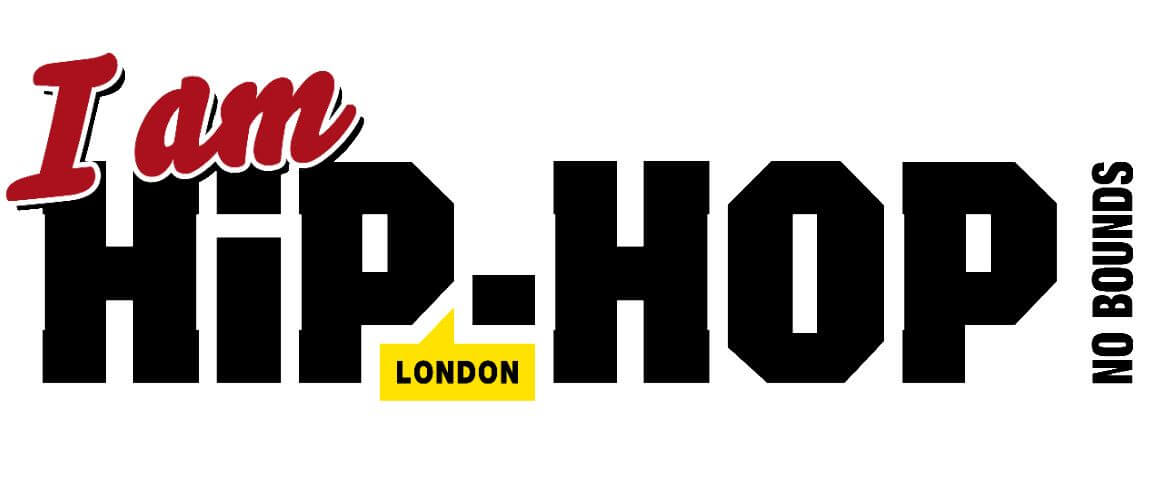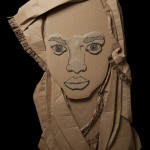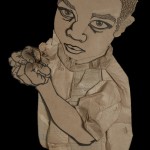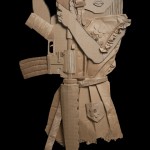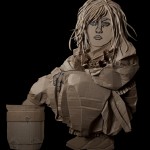Q. Hello Ali, Thank you for this opportunity to talk about your beautiful artwork. Can you tell us something about your background?
I was born in Iran in 1974 and as everyone knows with the revolution in the early 70’s and all that followed including the war of Iran and Iraq forced my parents to make a decision and do the unthinkable. My parents sent my brother & I to Sweden as political refugees (I was 10 and he 11). There we stayed with my father’s childhood friend & family who had left Iran years before. Soon we found ourselves in the Swedish immigration system and were adopted for almost 2 years. With the help of the Swedish Government and our adoptive parents we were finally able to get my parents & younger brother out of Iran. We were able to live as a family together again all in Goteborg Sweden. Goteborg is my home town and where I eventually went to school for advertising & design. Early on I started as a graphic designer / illustrator. After meeting my wife in 1997 who is from Dallas (we met in Sweden) I came to the United States and started working as a Graphic Designer. Soon I found myself working as an Art Director / Creative Director in which I was successful for 10 years.
Q. When did you start in the world of art?
From the stories told by my parents the first time I mentioned being an artist I was a 6 year old — I was told that artists are poor and can only afford bread and cheese. Of course my answer was, “I love cheese.” (and still do) but really truly as far as I can remember I have always been interested in art and ways to express myself. Art has always been my passion but it was only until recently in the past 2 years that I have decided to devote myself to my art 100% full-time. So to be honest I don’t consider myself to be in the art world.… I am still scratching the surface to get inside.
Q. When did you start making your recycled art work?
Growing up in Sweden recycling is part of our everyday life and the respect of nature is unquestionable. This has always been the foundation of my art & because of that I have always looked for new uses of the same material. While working as an Art Director designing displays for large companies I was exposed to corrugated cardboard. After each project there was always a lot of leftover cardboard. Clean, untouched cardboard. I struggled with the fact that recycling in the US was nothing like back home. It was then I decided to do something about it myself. Of course, the answer was to take it all home until I could figure out what to do with it. First I started drawing & painting on it then I started burning it for texture and eventually I ended up folding…and that was my ah ha moment.
Q. The Invisible People recycled art is truly inspiring, what is the story behind this project?
My choice of material, corrugated cardboard, to create bas-relief portraits of displaced children in their native habitats, reflects their unseen status. Like corrugated cardboard, the twenty million are everywhere yet invisible. I have a strong affinity for these traumatized and abused children because of my childhood. To me the plight of child soldiers and children abused as sex slaves escapes notice in the civilized word which causes me to question how civilized we really are. To me, these are “Invisible People.”
Q. What have been the responses to the Invisible People project?
The reaction is sometimes disappointing due to lack of understanding. Although everybody loves my work and thinks that it is different and unusual only a percentage of people truly understand what it’s about. As an example, I have a piece that’s called “Forgotten Innocence.” It depicts a young girl holding a gun. I get reactions that are the opposite of what I had in mind. Some think that I am a gun lover and I am displaying a cool image of that and of course that is absolutely not what I am representing. It doesn’t help that I am in Texas but overall I have been very blessed with all the positive support received over the past few years.
Q. How important do you think it is to collaborate an important message with art?
Of course art is something very personal but I do believe it’s an imperative way to expose and discuss issues. As an artist I believe we have a certain responsibilities to tell the stories that have no voice or are silent or yet untold or unheard.
Q. Do you have any upcoming projects?
The Invisible People is an on-going project. I have a vision of creating an entire environment in which the stories of each person is told. I am currently collaborating with writers to depict the stories behind each of my pieces. I hope to eventually be able to take this exhibit worldwide in order to share these stories and open a dialog for solutions. Who knows maybe one day I will have a show in your hometown.
For more information on Ali Golzad or to view more of his work visit http://golzadartblog.com/
Gata Malandra
Latest posts by Gata Malandra (see all)
- Event: World Crew Battle UK By Swatch — October 11, 2017
- Knowledge Session: Who Was Manco Inca? — May 4, 2017
- Video + Letra: Illmani ‘Saber es Poder’ — February 3, 2017
